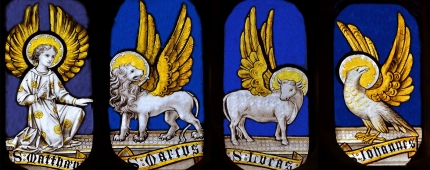Luke 24:23—Were Jesus’ resurrection appearances physical or mere visions?
Problem: Jesus spoke of His resurrection body having “flesh and bones” (Luke 24:39). He ate physical food (v. 42) and was touched by human hands (Matt. 28:9). But Luke calls it a “vision” in this passage, which implies that it was not a real physical appearance. In addition, some point to the fact that those who were with Paul during his Damascus road experience did not see Christ (see Acts 9:7).
Solution: The Resurrection appearances were literal, physical appearances. This is evident for several reasons. First of all, the passage cited above from Luke (24:23) does not refer to seeing Christ. It refers only to the women seeing angels at the tomb, not to any appearance of Christ. The Gospels never speak of a resurrection appearance of Christ as a vision, nor does Paul in his list in 1 Corinthians 15.
Second, the post-resurrection encounters with Christ are described by Paul as literal “appearances” (1 Cor. 15:5–8), not as visions. The difference between a mere vision and a physical appearance is significant. Visions are of invisible, spiritual realities, such as God and angels. Appearances, on the other hand, are of physical objects that can be seen with the naked eye. Visions have no physical manifestations associated with them, but appearances do.
People sometimes “see” or “hear” things in their visions (Luke 1:11ff; Acts 10:9ff), but not with their naked physical senses. When someone saw angels with the naked eye, or had some physical contact with them (Gen. 18:8; 32:24; Dan. 8:18), it was not a vision but an actual appearance of an angel in the physical world. During these appearances the angels temporarily assumed a visible form after which they returned to their normal invisible state. However, the Resurrection appearances of Christ were experiences of seeing Christ with the naked eye in His continued visible, physical form. In any event, there is a significant difference between a mere vision and a physical appearance.
Third, certainly the most common way to describe an encounter with the resurrected Christ is as an “appearance.” These appearances were accompanied by physical manifestations, such as, the audible voice of Jesus, His physical body and crucifixion scars, physical sensations (as touch), and eating on three occasions. These phenomena are not purely subjective or internal—they involve a physical, external reality.
Finally, the contention that Paul’s experience must have been a vision because those with him did not see Christ is unfounded, since they both heard the physical sound and saw the physical light, just as Paul did. Only Paul looked into the light, and so only he saw Jesus.
See All Problems
This excerpt is from When Critics Ask: A Popular Handbook on Bible Difficulties (Wheaton, Ill.: Victor Books, 1992). © 2014 Norman Geisler and Thomas Howe. All rights reserved. Used by permission. Click here to purchase this book.














